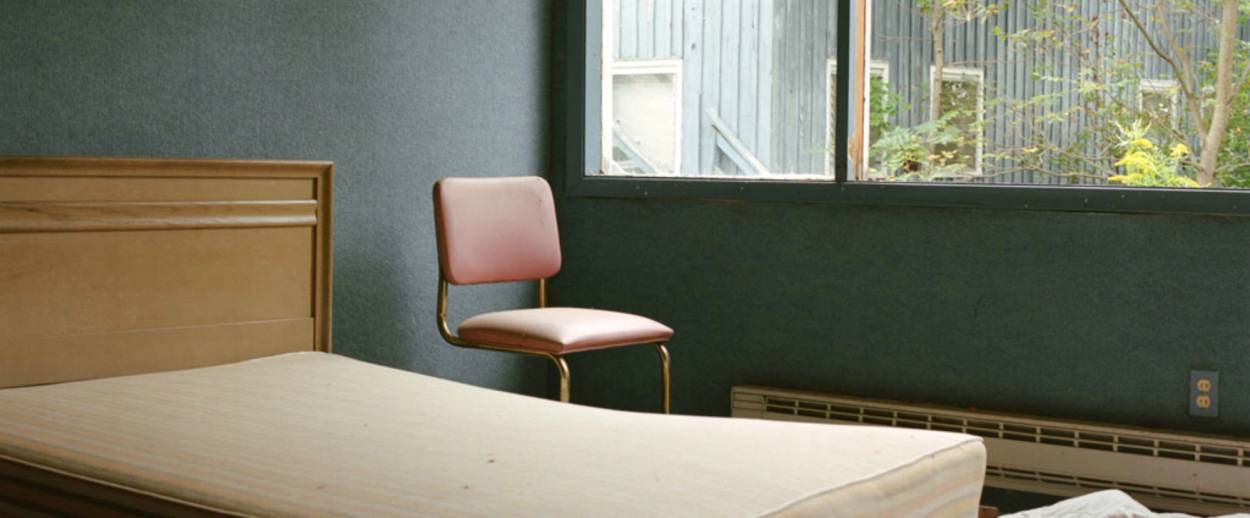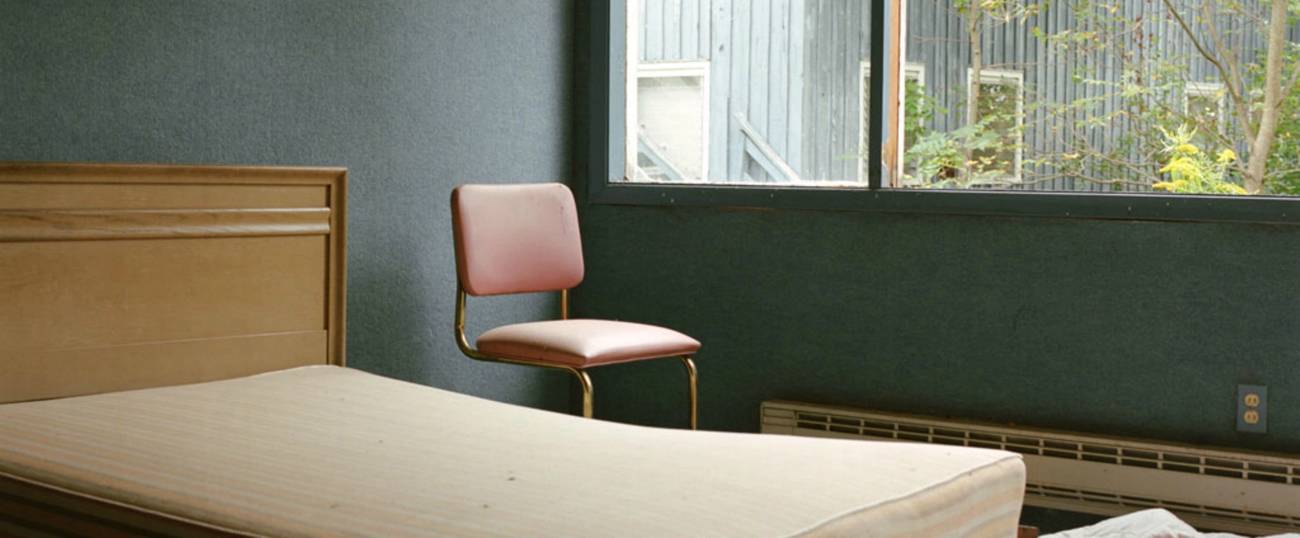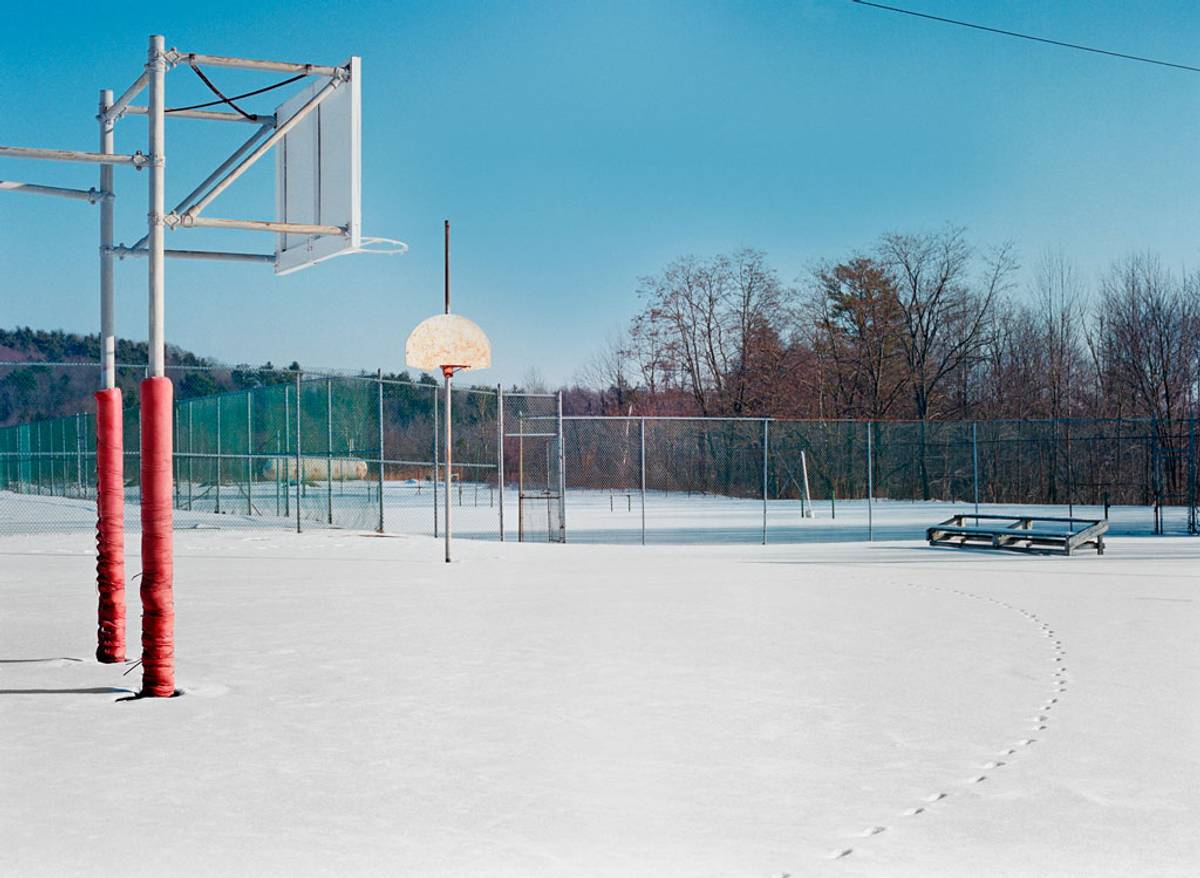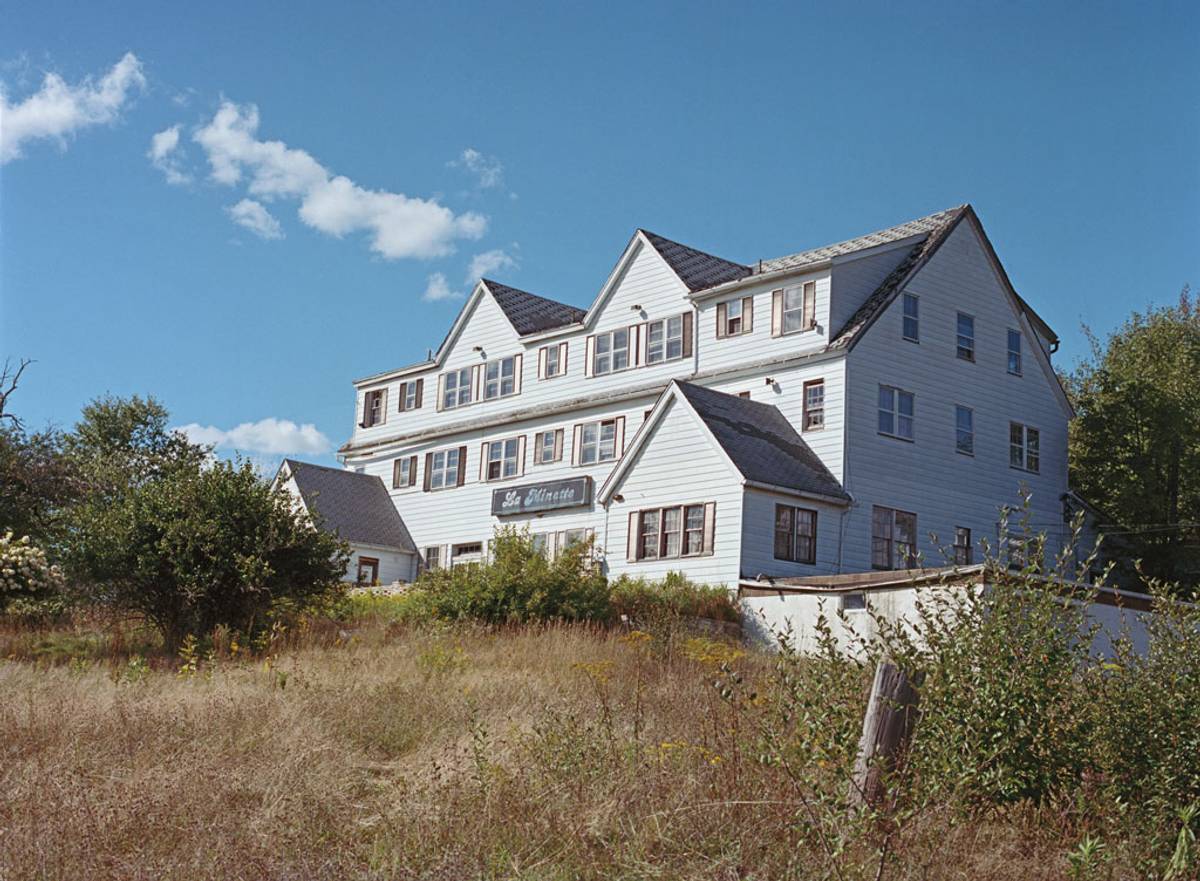Ghosts of the Borscht Belt
In her new book, photographer Marisa Scheinfeld documents the ruins of resorts in the Catskills, ‘America’s Jewish Vacationland’




Back in 2012, Tablet ran a lovely digital slideshow by photographer Marisa Scheinfeld about Leftover Borscht, her photographic project documenting the ruins of old Jewish resorts in the Catskills. Now, that slideshow has grown into a book called The Borscht Belt: Revisiting the Remains of America’s Jewish Vacationland.
As you know, the area once was the Jewish equivalent of the Riviera. It teemed with bungalow colonies and fancy hotels, luring Jews of all classes with the promise of fresh air and relaxation. Many of our grandparents have fond memories of family trips to places with glamorous names like the Nevele and the Concord, the Tamarack Lodge and the Windsor Regency… or to others with more heimische names like Grossinger’s, Lansman’s and Kutsher’s. Legendary comics got their start there: Woody Allen, Milton Berle, Mel Brooks, Lenny Bruce, Sid Caesar, Billy Crystal, Phyllis Diller, Jackie Mason, Carl Reiner, Joan Rivers, and Jerry Stiller. Musical and Variety stars-to-be graced Catskills supper club stages: Sammy Davis, Jr., Benny Goodman, Joel Grey, Madeline Kahn, Barry Manilow, Bette Midler, Barbra Streisand, and Sophie Tucker. Clean-cut young Jewish men put themselves through college by washing dishes, dancing with bubbes, leading lawn games and conga lines. (Nobel Prize-winning physicist Richard Feynman was a lowly young waiter there.)
But as the 1960s and ‘70s progressed, the Catskills’ decline began. Jews were becoming more acculturated; fewer mainstream hotels were overtly discriminatory; air travel became cheaper; families scattered. Old hotels began to crumble. Some became meditation retreats, summer camps for Hasidim, rehab centers. Others were overtaken by nature, and those are the ones that star in Scheinfeld’s photography.

The Borscht Belt is full of lush, mysterious, mournful, sometimes oddly funny photos: crumbling walls, graffiti-filled pools, rusted swings and basketball hoops, stacks of webbed nylon pool lounges crabbed like spider legs; children’s toys half-submerged in murky water, bits of bird skeleton and detritus on industrial carpet, a scattering of festive red, white and blue poker chips on scrabbled ground. There are lovely, melancholy essays by Scheinfeld herself, writer Stefan Kanfer and historian Jenna Weissman Joselit (whose meditation on the resorts’ old chairs is damn near virtuosic). Tablet contributor Maya Benton, with a nod to Susan Sontag’s comment that ‘all photographs testify to time’s relentless melt,’ praised Scheinfeld’s “melancholic images of ruins, detritus and festering vegetation…haunted by an unseen and undefined presence, providing a visual meditation on abandonment and absence.”

While doing the project, she became a professional trespasser, gaining access to places that had moldered untouched for decades. Pools lay empty and peeling; many buildings had become charred ruins; nature had begun reclaiming its territory. As she wrote back then, her project cataloged “the growth, flowering, and exhaustion of things and their subsequent regeneration. As each image began to reveal its layers, the project became reminiscent of the life cycle itself: old structures evolving into something new, odd, and often intriguing.”
Looking at these pictures, you can practically hear the echoes of clacking mah-jongg tiles, dinner dishes clattering, Dean Martin crooning, waves of laughter at long-dead, outraged, sputtering stand-up comics. You can practically see Baby running into Johnny Castle’s muscled arms. The past is gone, and the past is always with us.
Related: Remembering the Spot Where People Filled Up on the Way to the Catskills
At a Catskills Reunion, a Bungalow Colony’s Past and Present Come Together
Marjorie Ingall is a former columnist for Tablet, the author of Mamaleh Knows Best, and a frequent contributor to the New York Times Book Review.